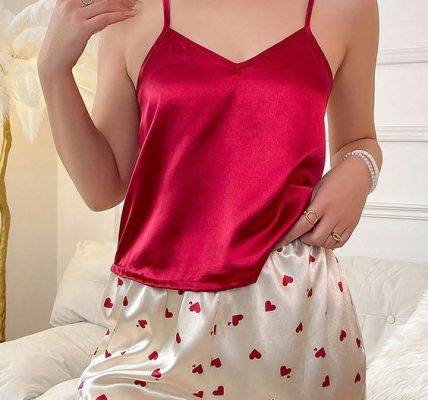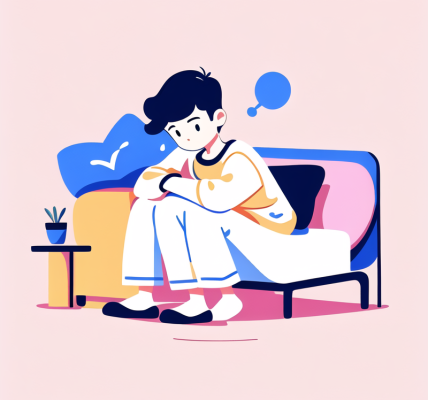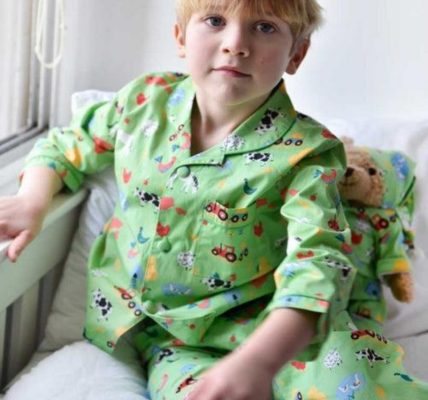Pajamas, those beloved garments synonymous with bedtime comfort and relaxation, boast a rich and fascinating history. From their origins in ancient civilizations to their modern-day iterations, pajamas have undergone a remarkable journey. This article delves into the world of pajamas, exploring their evolution and cultural significance across continents.
Beyond Sleepwear: The Early Origins of Pajamas
The word “pajama” has its roots in Hindi, derived from the terms “pae jama” or “pai jama,” which literally translate to “leg garment.” The earliest references to pajama-like clothing date back to the 13th century in the Ottoman Empire. Here, loose-fitting trousers tied at the waist were worn as everyday attire by both men and women.

Comfort and Style in South Asia: In India, Pakistan, Bangladesh, and Sri Lanka, similar loose-fitting pants known as “dhoti” or “lungi” were traditionally worn by men. Women often wore loose trousers or salwar kameez sets, which offered comfort and practicality for daily life.
Cultural Crossroads: The Arrival of Pajamas in Europe
European traders and colonists encountered these garments during their interactions with the Middle East and South Asia. The term “pajama” entered the English language in the 17th century, initially used to describe the loose trousers worn in these regions.
A Fashionable Novelty: In the 1600s, European travelers brought back these comfortable garments, sparking a fascination with Eastern attire. Wealthy Europeans began adopting pajama-like trousers as a fashionable alternative to nightgowns. However, these early “pajamas” were still considered loungewear for the elite.
A Shift Towards Sleepwear: The Rise of Pajamas in the 19th Century
The 19th century witnessed a significant shift in the perception of pajamas. The Victorian era, with its emphasis on modesty and practicality, saw the rise of nightwear specifically designed for sleeping. Loose-fitting pajama sets, often made from flannel or cotton, became increasingly popular, particularly among men.

The Introduction of Two-Piece Sets: By the late 19th century, the concept of two-piece pajama sets, consisting of loose trousers and a jacket or shirt, became widespread. This style offered more comfort and practicality compared to traditional nightgowns.
The 20th Century and Beyond: Pajamas for Everyone
The 20th century marked a turning point for pajamas. With the rise of casual wear and changing social norms, pajamas transitioned from solely sleepwear to loungewear and leisurewear. Here are some key trends that shaped the evolution of pajamas in the 20th century:
- The Rise of Women’s Pajamas: Prior to the 20th century, pajamas were primarily worn by men. However, the early 1900s saw a surge in the popularity of women’s pajamas, often inspired by menswear styles.
- The Influence of Hollywood: Hollywood glamor played a role in popularizing pajamas. Actresses and celebrities photographed lounging in luxurious sleepwear helped solidify their image as a symbol of relaxation and leisure.
- Material Innovations: The development of new fabrics like rayon and nylon in the mid-20th century offered more comfortable and affordable options for sleepwear.
- Pajama Parties: The concept of pajama parties, particularly popular among children and teenagers, further cemented the association of sleepwear with relaxation and fun.
The Modern Landscape: A World of Pajama Styles
Today, pajamas come in a wide variety of styles, materials, and colors to cater to different preferences and needs. Here’s a glimpse into the diverse world of modern sleepwear:

- Classic Styles: The traditional two-piece pajama sets in cotton or flannel remain popular choices for their timeless comfort.
- Seasonal Options: Lighter fabrics like silk or satin are perfect for warmer weather, while fleece or flannel pajamas provide warmth during colder months.
- Fun and Whimsical Designs: Pajamas can be playful and expressive, featuring prints, patterns, characters, or pop culture references.
- Matching Sets: Matching pajama sets for couples or families have become a popular trend, offering a touch of fun and togetherness.
Beyond Comfort: The Cultural Significance of Pajamas
Pajamas hold a special place in our lives, transcending their function as sleepwear. They represent:
- Relaxation and Comfort: Pajamas signal a shift to a state of relaxation and unwinding after a long day.
- Self-Care and Wellness: The act of changing into sleepwear can be a form of self-care, signifying a transition to prioritizing rest and rejuvenation.
- Family Bonding: Wearing matching sleepwear can foster a sense of togetherness and create lasting memories for families.
- Cultural Expression: Pajama designs can reflect cultural trends, artistic styles, or even favorite movies and characters.
- Hospital Gowns: Pajama-inspired garments are often used as hospital gowns, offering a touch of comfort and familiarity to patients.
Beyond the Nightstand: Creative Uses for Pajamas
Pajamas aren’t confined to the bedroom. Their comfort and versatility can extend far beyond bedtime. Here are some creative ways to utilize your favorite sleepwear:

- Lounging in Style: Pajamas are perfect for lazy Sundays or cozy evenings spent at home. Curl up with a good book, binge-watch your favorite show, or simply relax in ultimate comfort.
- Work from Home Comfort: While maintaining professionalism is important, working from home allows for more relaxed attire. Opt for comfortable yet stylish pajama sets that allow for movement and productivity.
- Travel Companions: Pajamas make excellent travel companions. Choose breathable fabrics like cotton or linen for comfortable long journeys. They’re perfect for lounging in your hotel room or airplane travel.
- The Ultimate Spa Day: Create a spa-like experience at home. Slip into your favorite sleepwear, light some candles, and pamper yourself with a relaxing bath or facial.
- Themed Parties: Pajama parties aren’t just for kids! Host a themed pajama party with friends or family, complete with games, movies, and snacks.
- Costumes in a Pinch: Need a last-minute costume idea? Pajamas can be easily transformed into various costumes with a little creativity. Think animals, superheroes, or even a classic “tourist” look.
Pajama Care: Keeping Your Sleepwear Soft and Cozy
To ensure your pajamas stay comfortable and last longer, proper care is essential. Here are some tips:
- Follow Care Instructions: Always check the care label on your sleepwear for specific washing and drying instructions. Some fabrics might require gentle washing or handwashing.
- Turn Pajamas Inside Out: Turning sleepwear inside out before washing helps protect the fabric and prevent fading.
- Use Gentle Detergent: Opt for a gentle laundry detergent formulated for delicate fabrics. Avoid harsh chemicals or bleach that can damage the fibers.
- Air Dry Whenever Possible: Air drying is the most gentle way to dry your sleepwear. Hang them to dry in a well-ventilated area or lay them flat on a drying rack.
- Ironing (Optional): If ironing is necessary, use a low heat setting and avoid ironing directly on prints or embellishments.
By following these simple care tips, you can extend the lifespan of your favorite sleepwear and keep them feeling soft and comfortable for years to come.
The Future of Sleepwear: Innovation and Sustainable Practices
The future of sleepwear is likely to see a continued focus on comfort, innovation, and sustainability. Here are some potential trends:

- Performance Fabrics: Advancements in fabric technology may lead to sleepwear that are not only comfortable but also moisture-wicking, temperature-regulating, or even odor-resistant.
- Smart Pajamas: The integration of technology into sleepwear could lead to “smart pajamas” that track sleep patterns or offer personalized comfort features.
- Sustainable Materials: The growing awareness of environmental issues may lead to a rise in pajamas made from eco-friendly materials like organic cotton or recycled fibers.
Embrace Comfort and Relaxation: Slip into Your Perfect Sleepwear
From their ancient origins to their modern-day iterations, sleepwear have served as a symbol of comfort and relaxation. Whether you prefer classic cotton PJs or a fun, printed set, there’s a perfect pair of pajamas waiting to be discovered. So, unwind, slip into your favorite sleepwear, and embrace the cozy comfort that pajamas offer.




